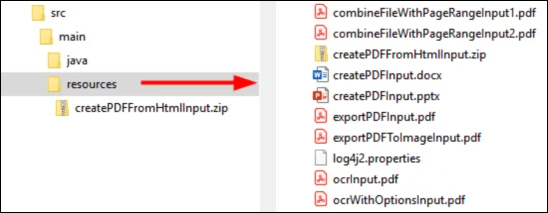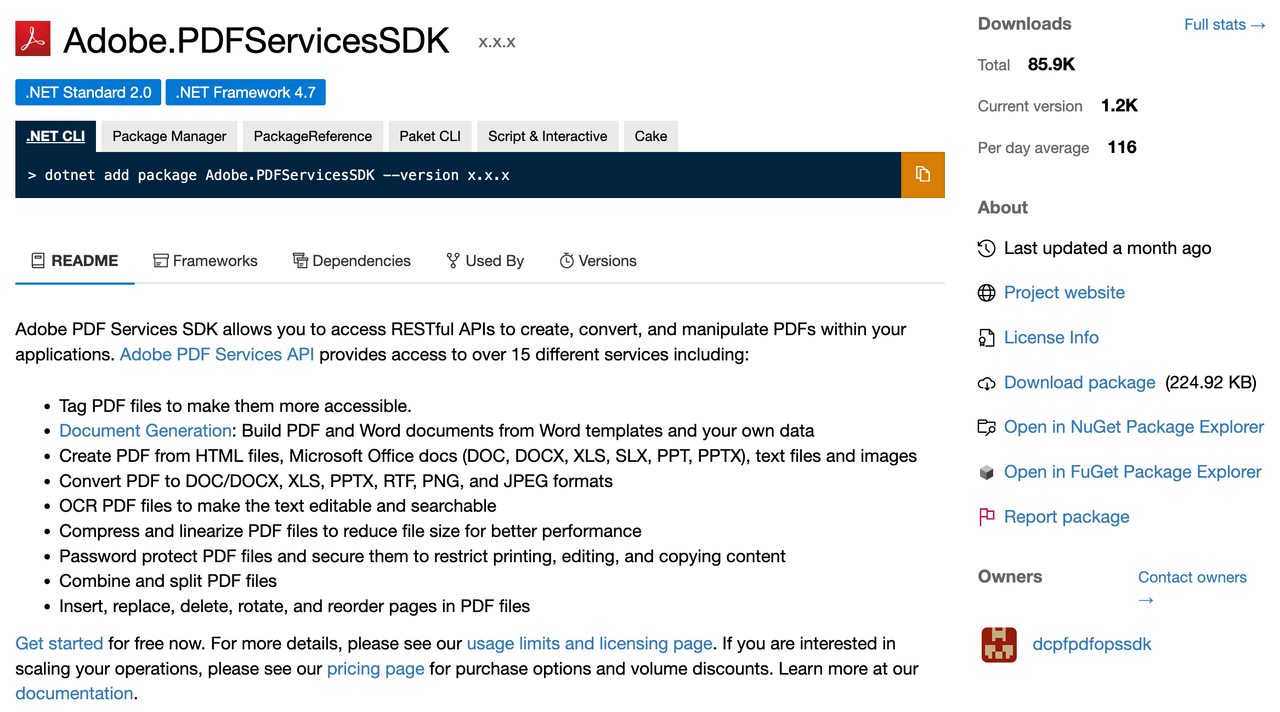Getting Started
The API is accessible through SDKs which help you get up and running quickly. Once you've received your developer credential, download and set up one of the sample projects. After you're familiar with the APIs, leverage the samples in your own server-side code.
The SDK only supports server-based use cases where credentials are saved securely in a safe environment. SDK credentials should not be sent to untrusted environments or end user devices.
Step 1: Procure Digital Certificate Credentials
- A client must register with a Trust Service Provider (TSP) and obtain the digital certificate. A certificate may be purchased from any of the supported TSPs which are Cloud Signature Consortium (CSC) compliant. For more details, see CSC standard.
- TSP performs remote identity verification of the client who acts as the legal owner of the digital certificate.
- After identity verification, the TSP issues a digital certificate to the client with a
credential_id,client_idandclient_secret. These are typically protected by a static PIN. The client should securely store the credential details and PIN for later use.

Step 2: (OPTIONAL) Procure Timestamping URL and Credentials
- Client can register themselves with a Timestamping Authority (TSA) of their choice to include a trusted timestamp while performing eSeal operation on a document. Client will need the TSA URL along with optional username and password to use this feature.
- The supported TSAs are listed here. If support for any other TSA is required, reach out to us through customer support.
Step 3: Obtain your TSP OAuth Token
The client sends the client_id and client_secret to the TSP's OAuth 2.0 authorization API. The TSP responds with an access token which is passed as one of the input parameters to the PDF Electronic Seal API. The purpose of this token is to access the TSP's end points for the sealing process. It is valid during a timeframe specified by the TSP.

Sample OAuth Request
Copied to your clipboardcurl --location --request POST 'https://<base-url>/<API-domain-name>/csc/v0/oauth2/token'--header 'cache-control: no-cache'--header 'content-type: application/json'--data-raw '{"lang": "en-US","client_id": "<YOUR_CLIENT_ID>","client_secret": "<YOUR_CLIENT_SECRET>","grant_type": "client_credentials"}'
Sample Response
Copied to your clipboard{"access_token": "xxxx-xxx-xxx-xxxx-xxxxxxxx","token_type": "Bearer","expires_in": <TIME_IN_SECONDS>}
Once the customer has all the necessary prerequisites in place, they have to call the PDF Electronic Seal API with the appropriate parameters to get the electronically sealed PDF.

Step 4 : Getting the API access token
PDF Electronic Seal API endpoints are authenticated endpoints. Getting an access token is a two-step process :
- Get Credentials - Invoking PDF Services API requires an Adobe-provided credential. To get one, click here, and complete the workflow. Be sure to copy and save the credential values to a secure location.
- Retrieve Access Token - The PDF Services APIs require an access_token to authorize the request. Use the "Get AccessToken" API from the Postman Collection with your client_id, client_secret (mentioned in the pdfservices-api-credentials.json file downloaded in 1) to get the access_token OR directly use the below mentioned cURL to get the access_token.
Copied to your clipboardcurl --location 'https://pdf-services.adobe.io/token' \--header 'Content-Type: application/x-www-form-urlencoded' \--data-urlencode 'client_id={{Placeholder for Client ID}}' \--data-urlencode 'client_secret={{Placeholder for Client Secret}}'
Step 5 : Uploading an asset
After getting the access token, we need to upload the asset. Uploading an asset is a two-step process :
- First you need to get an upload pre-signed URI by using the following API.
You can read more about the API in detail here.
Copied to your clipboardcurl --location --request POST 'https://pdf-services.adobe.io/assets' \--header 'X-API-Key: {{Placeholder for client_id}}' \--header 'Authorization: Bearer {{Placeholder for token}}' \--header 'Content-Type: application/json' \--data-raw '{"mediaType": "{{Placeholder for mediaType}}"}'
- On getting a
200response status from the above API, use theuploadUrifield in the response body of the above API to upload the asset directly to the cloud provider using a PUT API call. You will also get anassetIDfield which will be used in creating the job.
Copied to your clipboardcurl --location -g --request PUT 'https://dcplatformstorageservice-prod-us-east-1.s3-accelerate.amazonaws.com/b37fd583-1ab6-4f49-99ef-d716180b5de4?X-Amz-Security-Token={{Placeholder for X-Amz-Security-Token}}&X-Amz-Algorithm={{Placeholder for X-Amz-Algorithm}}&X-Amz-Date={{Placeholder for X-Amz-Date}}&X-Amz-SignedHeaders={{Placeholder for X-Amz-SignedHeaders}}&X-Amz-Expires={{Placeholder for X-Amz-Expires}}&X-Amz-Credential={{Placeholder for X-Amz-Credential}}&X-Amz-Signature={{Placeholder for X-Amz-Signature}}' \--header 'Content-Type: application/pdf' \--data-binary '@{{Placeholder for file path}}'
For PDF Electronic Seal API, you can specify an optional seal image i.e. a logo/watermark/background image to be used as part of the seal's appearance. Step 4 can be repeated for uploading this seal image.
Step 6 : Creating the job
To create a job for the operation, please use the assetID obtained in Step 2 in the API request body. On successful job submission you will get a status code of 201 and a response header location which will be used for polling.
For creating the job, please refer to the corresponding API spec for the particular PDF Operation.
Step 7 : Fetching the status
Once the job is successfully created, you need to poll the at the location returned in response header of Step 3 by using the following API
You can read more about the API in detail here.
Copied to your clipboardcurl --location -g --request GET 'https://pdf-services.adobe.io/operation/electronicseal/{{Placeholder for job id}}/status' \--header 'Authorization: Bearer {{Placeholder for token}}' \--header 'x-api-key: {{Placeholder for client id}}'
Step 8 : Downloading the asset
On getting 200 response code from the poll API, you will receive a status field in the response body which can either be in progress, done or failed.
If the status field is in progress you need to keep polling the location until it changes to done or failed.
If the status field is done the response body will also have a download pre-signed URI in the dowloadUri field, which will be used to download the asset directly from cloud provider by making the following API call
You can read more about the API in detail here.
Copied to your clipboardcurl --location -g --request GET 'https://dcplatformstorageservice-prod-us-east-1.s3-accelerate.amazonaws.com/b37fd583-1ab6-4f49-99ef-d716180b5de4?X-Amz-Security-Token={{Placeholder for X-Amz-Security-Token}}&X-Amz-Algorithm={{Placeholder for X-Amz-Algorithm}}&X-Amz-Date={{Placeholder for X-Amz-Date}}&X-Amz-SignedHeaders={{Placeholder for X-Amz-SignedHeaders}}&X-Amz-Expires={{Placeholder for X-Amz-Expires}}&X-Amz-Credential={{Placeholder for X-Amz-Credential}}&X-Amz-Signature={{Placeholder for X-Amz-Signature}}'
There you go! Your job is completed in 8 simple steps.
SDK
PDF Services API is also accessible via SDKs in popular languages such as Node.js, Java and .NET.
Please allow-list the following hostnames before using Adobe PDF Services SDK:
- ims-na1.adobelogin.com (Required for all the clients)
For clients using SDK version 3.x and above :
- Using United States (Default) region for processing documents :
- dcplatformstorageservice-prod-us-east-1.s3-accelerate.amazonaws.com
- pdf-services-ue1.adobe.io
- pdf-services.adobe.io (Default URI)
- Using Europe region for processing documents :
- dcplatformstorageservice-prod-eu-west-1.s3.amazonaws.com
- pdf-services-ew1.adobe.io
For clients using SDK version upto 2.x :
- cpf-ue1.adobe.io
Java
Jump start your development by bookmarking or downloading the following key resources:
- This document
- API reference (Javadoc)
- Java Sample code
- Java library. The Maven project contains the .jar file.
Authentication
Once you complete the Getting Credentials, a zip or json file automatically downloads that contains content whose structure varies based on whether you opted to download personalized code samples.
- Personalized Download: Downloads the zip which contains
adobe-dc-pdf-services-sdk-java-sampleswith a preconfiguredpdfservices-api-credentials.jsonfile. - Non Personalized Download: Downloads the
pdfservices-api-credentials.jsonwith your preconfigured credentials.
After downloading the zip, you can run the samples in the zip directly by setting up the two environment variables PDF_SERVICES_CLIENT_ID and PDF_SERVICES_CLIENT_SECRET by running the following cammands :
Windows:
set PDF_SERVICES_CLIENT_ID=<YOUR CLIENT ID>set PDF_SERVICES_CLIENT_SECRET=<YOUR CLIENT SECRET>
MacOS/Linux:
export PDF_SERVICES_CLIENT_ID=<YOUR CLIENT ID>export PDF_SERVICES_CLIENT_SECRET=<YOUR CLIENT SECRET>
Example pdfservices-api-credentials.json file
Copied to your clipboard{"client_credentials": {"client_id": "<YOUR_CLIENT_ID>","client_secret": "<YOUR_CLIENT_SECRET>"},"service_principal_credentials": {"organization_id": "<YOUR_ORGNIZATION_ID>"}}
Setup a Java environment
- Install Java 8 or above.
- Run
javac -versionto verify your install. - Verify the JDK bin folder is included in the PATH variable (method varies by OS).
- Install Maven. You may use your preferred tool; for example:
- Windows: Example: Chocolatey.
- Macintosh: Example:
brew install maven.
Maven uses pom.xml to fetch pdfservices-sdk from the public Maven repository when running the project. The .jar automatically downloads when you build the sample project. Alternatively, you can download the pdfservices-sdk.jar file, and configure your own environment.
Running the samples
The quickest way to get up and running is to download the code samples during the Getting Credentials workflow. These samples provide everything from ready-to-run sample code, an embedded credential json file, and pre-configured connections to dependencies.
- Download the Java sample project.
- Build the sample project with Maven:
mvn clean install. - Set the environment variables
PDF_SERVICES_CLIENT_IDandPDF_SERVICES_CLIENT_SECRETby running the following commands :
Windows:
set PDF_SERVICES_CLIENT_ID=<YOUR CLIENT ID>set PDF_SERVICES_CLIENT_SECRET=<YOUR CLIENT SECRET>
MacOS/Linux:
export PDF_SERVICES_CLIENT_ID=<YOUR CLIENT ID>export PDF_SERVICES_CLIENT_SECRET=<YOUR CLIENT SECRET>
- Test the sample code on the command line.
- Refer to this document for details about running samples as well as the API Reference for API details.
Command line execution is not mandatory. You can import the samples Maven project into your preferred IDE (e.g. IntelliJ/Eclipse) and run the samples from there.
Verifying download authenticity
For security reasons you may wish to confirm the installer's authenticity. To do so,
- After installing the package, navigate to the
.jar.sha1file. - Calculate the hash with any 3rd party utility.
- Find and open PDF Services sha1 file. Note: if you're using Maven, look in the .m2 directory.
- Verify the hash you generated matches the value in the .sha1 file.
Copied to your clipboardc0bc2ec0eb15dd43d014bd885b3833539f103cf2
Logging
Refer to the API docs for error and exception details.
- For logging, use the slf4j API with a log4js-slf4j binding.
- Logging configurations are provided in src/main/resources/log4js.properties.
- Specify alternate bindings, if required, in pom.xml.
log4js.properties file
Copied to your clipboardname=PropertiesConfigappenders = console# A sample console appender configuration, Clients can change as per their logging implementationrootLogger.level = WARNrootLogger.appenderRefs = stdoutrootLogger.appenderRef.stdout.ref = STDOUTappender.console.type = Consoleappender.console.name = STDOUTappender.console.layout.type = PatternLayoutappender.console.layout.pattern = [%-5level] %d{yyyy-MM-dd HH:mm:ss.SSS} [%t] %c{1} - %msg%nloggers = pdfservicessdk,validator,apache# Change the logging levels as per need. INFO is recommended for pdfservices-sdklogger.pdfservicessdk.name = com.adobe.pdfservices.operationlogger.pdfservicessdk.level = INFOlogger.pdfservicessdk.additivity = falselogger.pdfservicessdk.appenderRef.console.ref = STDOUTlogger.validator.name=org.hibernatelogger.validator.level=WARNlogger.apache.name=org.apachelogger.apache.level=WARN

Custom projects
While the samples use Maven, you can use your own tools and process.
To build a custom project:
- Access the .jar in the central Maven repository.
- Use your preferred dependency management tool (Ivy, Gradle, Maven), to include the SDK .jar dependency.
- Open the pdfservices-api-credentials.json downloaded when you created your credential.
- Add the Authentication details as described above.

.NET
Jumpstart your development by bookmarking or downloading the following key resources:
- This document
- Nuget package
- .NET API reference
- .NET Sample code
- Input/output test files reside in the their respective sample directories
Prerequisites
The samples project requires the following:
- NET: version 6.0 or above
- A build Tool: Either Visual Studio or .NET Core CLI.
Authentication
Once you complete the Getting Credentials, a zip or json file automatically downloads that contains content whose structure varies based on whether you opted to download personalized code samples.
- Personalized Download: Downloads the zip which contains
adobe-dc-pdf-services-sdk-java-sampleswith a preconfiguredpdfservices-api-credentials.jsonfile. - Non Personalized Download: Downloads the
pdfservices-api-credentials.jsonwith your preconfigured credentials.
After downloading the zip, you can run the samples in the zip directly by setting up the two environment variables PDF_SERVICES_CLIENT_ID and PDF_SERVICES_CLIENT_SECRET by running the following cammands :
Windows:
set PDF_SERVICES_CLIENT_ID=<YOUR CLIENT ID>set PDF_SERVICES_CLIENT_SECRET=<YOUR CLIENT SECRET>
MacOS/Linux:
export PDF_SERVICES_CLIENT_ID=<YOUR CLIENT ID>export PDF_SERVICES_CLIENT_SECRET=<YOUR CLIENT SECRET>
Example pdfservices-api-credentials.json file
Copied to your clipboard{"client_credentials": {"client_id": "<YOUR_CLIENT_ID>","client_secret": "<YOUR_CLIENT_SECRET>"},"service_principal_credentials": {"organization_id": "<YOUR_ORGNIZATION_ID>"}}
Set up a NET environment
Running any sample or custom code requires the following:
- Download and install the .NET SDK.
The Nuget package automatically downloads when you build the sample project.
Running the samples
The quickest way to get up and running is to download the code samples during the Getting Credentials workflow. These samples provide everything from ready-to-run sample code, an embedded credential json file, and pre-configured connections to dependencies.
- Clone or download the samples project.
- From the samples directory, build the sample project:
dotnet build. - Set the environment variables
PDF_SERVICES_CLIENT_IDandPDF_SERVICES_CLIENT_SECRETby running the following commands :
Windows:
set PDF_SERVICES_CLIENT_ID=<YOUR CLIENT ID>set PDF_SERVICES_CLIENT_SECRET=<YOUR CLIENT SECRET>
MacOS/Linux:
export PDF_SERVICES_CLIENT_ID=<YOUR CLIENT ID>export PDF_SERVICES_CLIENT_SECRET=<YOUR CLIENT SECRET>
- Test the sample code on the command line.
- Refer to this document for details about running samples as well as the API Reference for API details.
Verifying download authenticity
For security reasons you may wish to confirm the installer's authenticity. To do so,
- After installing the Nuget package, navigate to the .nuget directory.
- Find and open the .sha512 file.
- Verify the hash in the downloaded file matches the value published here.
Copied to your clipboardjdTK6PDvEcfTai7D3N97pd0u/XrvnlEJCqTRPKDrb02zcGzaVdX/2Of3WrHOqqWUFsg7GO3yf5cKXJDFN0kdMw==
Logging
Refer to the API docs for error and exception details.
The .NET SDK uses LibLog as a bridge between different logging frameworks. Log4net is used as a logging provider in the sample projects and the logging configurations are provided in log4net.config. Add the configuration for your preferred provider and set up the necessary appender as required to enable logging.
log4net.config file
Copied to your clipboard<log4net><root><level value="INFO" /><appender-ref ref="console" /></root><appender name="console" type="log4net.Appender.ConsoleAppender"><layout type="log4net.Layout.PatternLayout"><conversionPattern value="%date %level %logger - %message%newline" /></layout></appender></log4net>
Custom projects
While building the sample project automatically downloads the Nuget package, you can do it manually if you wish to use your own tools and process.
- Go to https://www.adobe.com/go/pdftoolsapi_net_nuget.
- Download the latest package.

Node.js
Jumpstart your development by bookmarking or downloading the following key resources:
- This document
- Node.js API reference
- Node.js Sample code
- Node.js SDK
Authentication
Once you complete the Getting Credentials, a zip or json file automatically downloads that contains content whose structure varies based on whether you opted to download personalized code samples.
- Personalized Download: Downloads the zip which contains
adobe-dc-pdf-services-sdk-java-sampleswith a preconfiguredpdfservices-api-credentials.jsonfile. - Non Personalized Download: Downloads the
pdfservices-api-credentials.jsonwith your preconfigured credentials.
After downloading the zip, you can run the samples in the zip directly by setting up the two environment variables PDF_SERVICES_CLIENT_ID and PDF_SERVICES_CLIENT_SECRET by running the following cammands :
Windows:
set PDF_SERVICES_CLIENT_ID=<YOUR CLIENT ID>set PDF_SERVICES_CLIENT_SECRET=<YOUR CLIENT SECRET>
MacOS/Linux:
export PDF_SERVICES_CLIENT_ID=<YOUR CLIENT ID>export PDF_SERVICES_CLIENT_SECRET=<YOUR CLIENT SECRET>
Example pdfservices-api-credentials.json file
Copied to your clipboard{"client_credentials": {"client_id": "<YOUR_CLIENT_ID>","client_secret": "<YOUR_CLIENT_SECRET>"},"service_principal_credentials": {"organization_id": "<YOUR_ORGNIZATION_ID>"}}
Set up a Node.js environment
Running any sample or custom code requires the following steps:
- Install Node.js 14.0 or higher.
The @adobe/pdfservices-node-sdk npm package automatically downloads when you build the sample project.
Copied to your clipboardnpm install --save @adobe/pdfservices-node-sdk
Running the samples
The quickest way to get up and running is to download the code samples during the Getting Credentials workflow. These samples provide everything from ready-to-run sample code, an embedded credential json file, and pre-configured connections to dependencies.
- Download the Node.js sample project .
- From the samples root directory, run
npm install. - Set the environment variables
PDF_SERVICES_CLIENT_IDandPDF_SERVICES_CLIENT_SECRETby running the following commands :
Windows:
set PDF_SERVICES_CLIENT_ID=<YOUR CLIENT ID>set PDF_SERVICES_CLIENT_SECRET=<YOUR CLIENT SECRET>
MacOS/Linux:
export PDF_SERVICES_CLIENT_ID=<YOUR CLIENT ID>export PDF_SERVICES_CLIENT_SECRET=<YOUR CLIENT SECRET>
- Test the sample code on the command line.
- Refer to this document for details about running samples as well as the API Reference for API details.
Verifying download authenticity
For security reasons you may wish to confirm the installer's authenticity. To do so,
- After installing the package, find and open package.json.
- Find the "_integrity" key.
- Verify the hash in the downloaded file matches the value published here.
Copied to your clipboardsha512-QFwmKkeFTvZhHXrklJOUbjCx8V6FftBC+DAsMCy7Q9vy5sPXQtO47rjAt6R7nzzcA/uUPfuw4/gCFNh7yRKKRQ==
Logging
Refer to the API docs for error and exception details.
The SDK uses the log4js API for logging. During execution, the SDK searches for config/pdfservices-sdk-log4js-config.json in the working directory and reads the logging properties from there. If you do not provide a configuration file, the default logging logs INFO to the console. Customize the logging settings as needed.
log4js.properties file
Copied to your clipboard{"appenders": {"consoleAppender": {"_comment": "A sample console appender configuration, Clients can change as per their logging implementation","type": "console","layout": {"type": "pattern","pattern": "%d:[%p]: %m"}}},"categories": {"default": {"appenders": ["consoleAppender"],"_comment": "Change the logging levels as per need. info is recommended for pdfservices-node-sdk","level": "info"}}}
Custom projects
While building the sample project automatically downloads the Node package, you can do it manually if you wish to use your own tools and process.
- Go to https://www.npmjs.com/package/@adobe/pdfservices-node-sdk
- Download the latest package.

Public API
PDF Services API is accessible directly via REST APIs which requires Adobe-provided credential for authentication. Once you've completed the Getting Credentials workflow, a zip file automatically downloads that contains content whose structure varies based on whether you opted to download personalized code samples. The zip file structures are as follows:
- Personalized Download: Downloads the zip which contains
adobe-dc-pdf-services-sdk-java-sampleswith a preconfiguredpdfservices-api-credentials.jsonfile. - Non Personalized Download: Downloads the
pdfservices-api-credentials.jsonwith your preconfigured credentials.
After downloading the zip, you can run the samples in the zip directly by setting up the two environment variables PDF_SERVICES_CLIENT_ID and PDF_SERVICES_CLIENT_SECRET by running the following cammands :
Windows:
set PDF_SERVICES_CLIENT_ID=<YOUR CLIENT ID>set PDF_SERVICES_CLIENT_SECRET=<YOUR CLIENT SECRET>
MacOS/Linux:
export PDF_SERVICES_CLIENT_ID=<YOUR CLIENT ID>export PDF_SERVICES_CLIENT_SECRET=<YOUR CLIENT SECRET>
Example pdfservices-api-credentials.json file
Copied to your clipboard{"client_credentials": {"client_id": "<YOUR_CLIENT_ID>","client_secret": "<YOUR_CLIENT_SECRET>"},"service_principal_credentials": {"organization_id": "<YOUR_ORGNIZATION_ID>"}}
